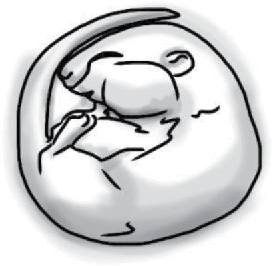Table 1.
Physiological and biochemical changes in mus musculus in natural torpor and adenosine-induced hypothermia.
Natural torpor
|
Adenosine-induced hypothermia
|
|
|---|---|---|
| Heart rate during entrance to hypothermia | 600 bpm → 100 bpm in 1 h | 600 bpm → 200 bpm in 8 h |
| Heart rate during arousal from hypothermia | 100 bpm → 600 bpm in 30 min | 200 bpm → 600 bpm in 90 min |
| Asystoles | Periodic and frequent skipped beats | Infrequent asystoles with extended interbeat intervals |
| Rate of heat loss during entrance | 0.2°C per minute | 5× faster |
| Rate of heat gain during arousal | 0.4°C per minute | 2× slower |
| Circulating lactate | Low | Low |
| Shivering | Periodically | None |
| c-Fos expression in the heart and liver | No change from normal | 80–100 fold induction |
Special thanks to Francesca Barradale for her drawings used in the table.
